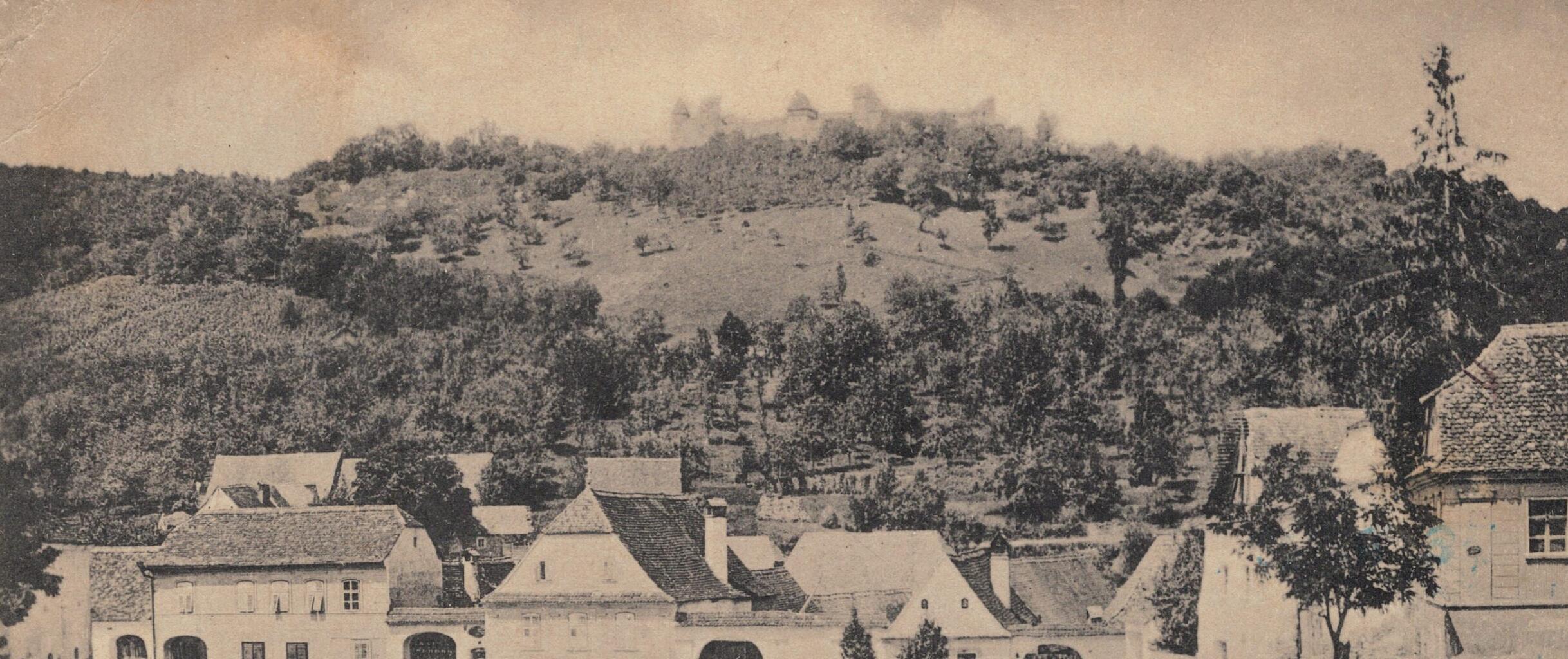Legend says that high atop a tree-covered hill near the village of Saschiz in Transylvania, there used to be a giant’s fortress that housed, as the name implies, giants.
Local legends always paint the landscape in mythical colours, which adds flair to a specific location. Mixing the fabulous with the real is a beautiful way of attracting interest and uncovering the secrets of a place.
Looking more closely into this fortress, the history of it is much deeper than the surface level. It’s more than a fortification on a hill. But it also explains why people created stories around it.
Layers of settlers
According to various monographies conducted in the past, the settlement and fort in Saschiz exhibits a series of different periods of settlers. Many different groups of people have made this place their home. And as such, have left some impression on it, to be later discovered. Two fortifications were found: one on the northwestern side of the modern-day village and another on the northeastern side. (*)
One monograph from 1949 showcases the discovery of Coţofeni ceramics pieces. This is a type of ceramics that can be dated as far back as 2500 to 1800 BC, which would make it one of the oldest periods during which people settled there. The Neolithic period, to be exact.
Other factors that also point to this age are the fortifications found on the hill highly typical of people from that era, which was a type of hillfort that follows the contour of the hill. Archaeologists in the area also refer to it as an “earth wave”. There are even signs of Roman settlement from around the 2nd or 3rd century.
Germanic settlers – Saxons
One of the most documented periods, however, falls under the Germanic colonists in the 14th century, that was most likely established to strengthen the Hungarian control on the region. This is where the northwestern fortification was built, which was a prominent, visible feature of the village.
It is locally known as the “Peasant’s fortress” or the “shelter fortress”. It was used as shelter from invading forces that were active in past centuries. ( * ) The fortress had seen a series of constructions over many years. This signals that it had been possibly consolidated and strengthened by other generations as they made use of it in times of need.
In contrast to other typical fortifications in the region, the “Peasant’s fortress” is an oddity. Germanic colonists in the region usually developed fortifications around their churches, and the famous fortified churches are peppered around the whole of Transylvania. But this one, in Saschiz, had been built atop a hill. A strategic position that might have granted the population ample forewarning of any invading forces. It was also close enough to the valley that people could quickly run to and hole up within the confines of the fortress for shelter.
Thus, they wait out any assault and use the position to defend themselves and their goods. It might have even made sense to store their goods indefinitely within the walls so that when needed, they could just seek shelter even faster without worrying about farm animals or food.
The giant’s fortress – Legends and stories
It’s not clear which of the two fortresses was assigned the moniker of the giant’s fortress, but it most likely was the more visible walled fortification. Even so, legends have flourished in Saschiz, tied to the old ruins of a time since passed.
People say that many more giants used to be housed in the fortress, but could not get along with the human population, so they left. Only one giant remained in the giant’s fortress because he was ill and could not leave. He was the last guardian there and would ring the bell daily at 9 AM. Alternately, he would ring in case of fire to wake or announce danger to the people in the valley.
There is also the belief that the fountain from the fortress might be linked with the church in the valley. A possible way out for people seeking shelter in the past to make a sneaky escape.
Another local legend speaks of a maiden who had been bricked up in the walls alive. The resounding echo within the giant’s fortress walls is her voice crying out. This type of legend is one that had made its way into the culture from Greek influences of sacrifices to gods for good fortune, like that of Iphigenia. Saschiz is not the only legend to feature such a story of a woman being walled up, and it probably mirrors that of Manole’s wife and the construction of Arges monastery. ( * )
Even still, some believed that whatever resident in the giant’s fortress remained, he was there to keep an eye on the people in the valley. Stray from the God fearing path, and the giant would bring down his wrath upon them, usually by launching boulders at them from atop the fortress.
Of course, these kinds of legends have also inspired parents to make up boogeyman stories. All in an effort to teach their children to behave, and so add to the tradition with local urban legends.
The giant’s fortress – ruins and new potential
It’s a wonder that after so many years of rich history, this fortress still exists today. Even so, it is still a small fortification compared to some others in the region and because of this, not as popular. So people created stories about it to explain its presence and find some comfort.
It has had a tumultuous life, and its time in the communist days wasn’t the most pleasant. There had been no effort to preserve it. As a consequence, much of its stones have been “mined” by the local population. They were used to either build or repair their homes down in the valley.
Luckily, all those older archaeological monographs have been a treasure trove of information. Later on, that information has helped local investors and the National Commission of Historic Monuments to piece it back together. Today, it is almost entirely restored and can even receive tourists.
Although there might still be a giant within its walls.
The tunnels beneath it have not yet been explored.
Bibliography and resources
- Cover image and historic notes ( * )
- Archaeological indexing – Roman settlement ( * )
- Archaeological indexing – “Peasants’ fortress” ( * )
- Archaeological indexing – Neolithic findings ( * )
- 2014 Article on Vocea Transilvaniei ( * )
- Book: Cronica cercetărilor arheologice din România, 2000 – page 218
- Translated version of the sacrifice legend “The architect Manole” ( * )
- Video – the fortress partially restored ( * )


Leave a Comment